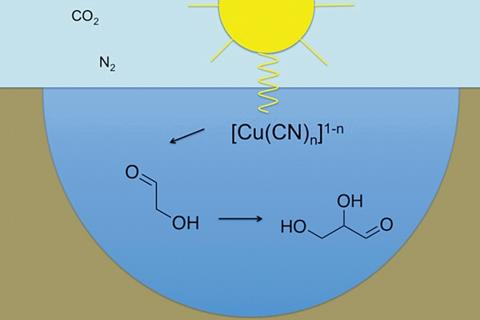Scientists in the US have carried out experiments confirming that ultraviolet light could have driven the synthesis of simple prebiotically important sugars under conditions found on early Earth.1

Source: © Royal Society of Chemistry
UV light photooxidises cyanocuprates, producing aqueous electrons, which are key for putting into motion a reaction network capable of producing glycolaldehyde and glyceraldehyde
Back in 2012, Dougal Ritson and John Sutherland,2 at the Medical Research Council Laboratory of Molecular Biology in Cambridge, UK, synthesised sugars from cyanocuprates using ultraviolet light – findings that supported the RNA world hypothesis for the origin of life. Now Zoe Todd and Dimitar Sasselov from the Harvard-Smithsonian Centre for Astrophysics, and their colleagues have performed similar experiments, but at lower, and more representative, wavelengths than those previously considered.
Read the full story by Lynn Murphy on Chemistry World.
References
1 Zoe Todd et al, Chem. Commun., 2018, DOI: 10.1039/c7cc07748c (This article is open access.)
2 D Ritson and J Sutherland, Nat. Chem., 2012, 4, 895 (DOI: 10.1038/nchem.1467)










